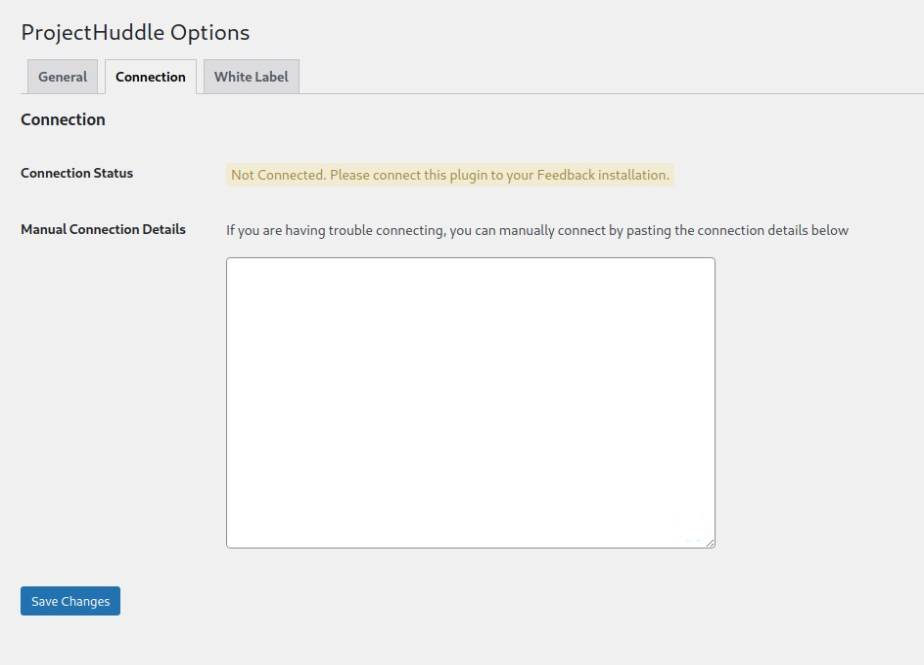Adding A Client's WordPress Site
Excited to get up and running? Right on! Watch the video below for a step-by-step guide on adding a WordPress site!
In this Article
You can easily connect a client's WordPress site to your ProjectHuddle dashboard installation using the ProjectHuddle Client Site Plugin. With this method, you can:
- Easily add client's WordPress sites with a few clicks.
- No extra logins or access links required. If clients are logged into their own site, they can leave comments.
- Allow commenting in the WordPress admin
- Allow Guests to comment.
Automatically Adding A New WordPress Site
- 1
-
Visit ProjectHuddle > New Website
To add additional website projects, such as a client's website visit ProjectHuddle > New Website from your WordPress Admin sidebar.
- 2
-
Enter a Title and Website URL
Enter the title of your website and paste the URL under Website Setup.

- 3
-
Choose "WordPress" for your site type
Enter the Admin Username and Password of your Client's Site. After that click "Connect and install the child plugin" to continue.

- 4
-
Install and activate the plugin in the popup window.
Note: You may need to disable popup blockers for the popup window to load. 

- 5
-
Close The Popup Window
You can change feedback options, then close the popup window when you're finished. This will automatically trigger the verification step of the site.
-

Manually Adding A New Client's WordPress site.
Sometimes an automatic connection cannot be made to your client's site. Most commonly, this is because xml-rpc.php is disabled through your host or through a security plugin. You can either temporarily enable xml-rpc.php, or use the manual method outlined here.
- 1
-
Visit ProjectHuddle > New Website
To add additional website projects, such as a client's website visit ProjectHuddle > New Website from your WordPress Admin sidebar.
- 2
-
Enter a Title and Website URL
Enter the title of your website and paste the URL under Website Setup.

- 3
-
Choose "WordPress" for your site type.

- 4
-
Click the "Try Connecting Manually" link at the bottom of the page

- 5
-
Click the button to install the Client Site plugin.
This will open up your child site in a new tab to install the child site plugin. If you cannot see the plugin on the plugins search page, navigate to Plugins >Add New on your client's site and search for "ProjectHuddle Client Site".


6
Copy and paste the code.
On your client's site, under Settings > Feedback > Connection, you can paste the code to make the connection. Clicking the "Copy the Code and Click Here" button will take you directly to that page.

Copy and paste the code.
On your client's site, under Settings > Feedback > Connection, you can paste the code to make the connection. Clicking the "Copy the Code and Click Here" button will take you directly to that page.

Troubleshooting
I Can't Automatically Connect To The Site
Most of the time, this is because you or your host has disabled xml-rpc on your client's site. Many security plugins can do this. You can temporarily enable xml-rpc while you connect your client site. Then once the connection is made, disable xml-rpc once again.
Alternatively, you can manually connect, following the instructions above.
I Can't Manually Connect To The Site
Be sure you are copying the code exactly into the client site plugin. As an alternative, you can always add a WordPress site as a custom site. To do that, follow our Custom Site instructions.
Site Isn't Verifying
If you get stuck on the verification step on your New Website page, try visiting your client's site directly. If the script loads, it should verify the site for you automatically.
If the script is not loading, there could be a reason why. On your client's site, open your browser console. You can do this by pressing Ctrl+Shift+J (Windows / Linux) or Cmd+Opt+J (Mac).
- If the error your seeing is giving a 403 or 404 message, there is likely a theme or plugin conflict happening. Try disabling other plugins momentarily to rule out a plugin conflict
- If the error your seeing is saying the "access token is invalid or not set" - try clearing your browser cache.
- Check our known issues documentation for any known issues with plugins, themes or hosts.
- Reach out to support for assistance, and we'd be happy to get you up and running.







